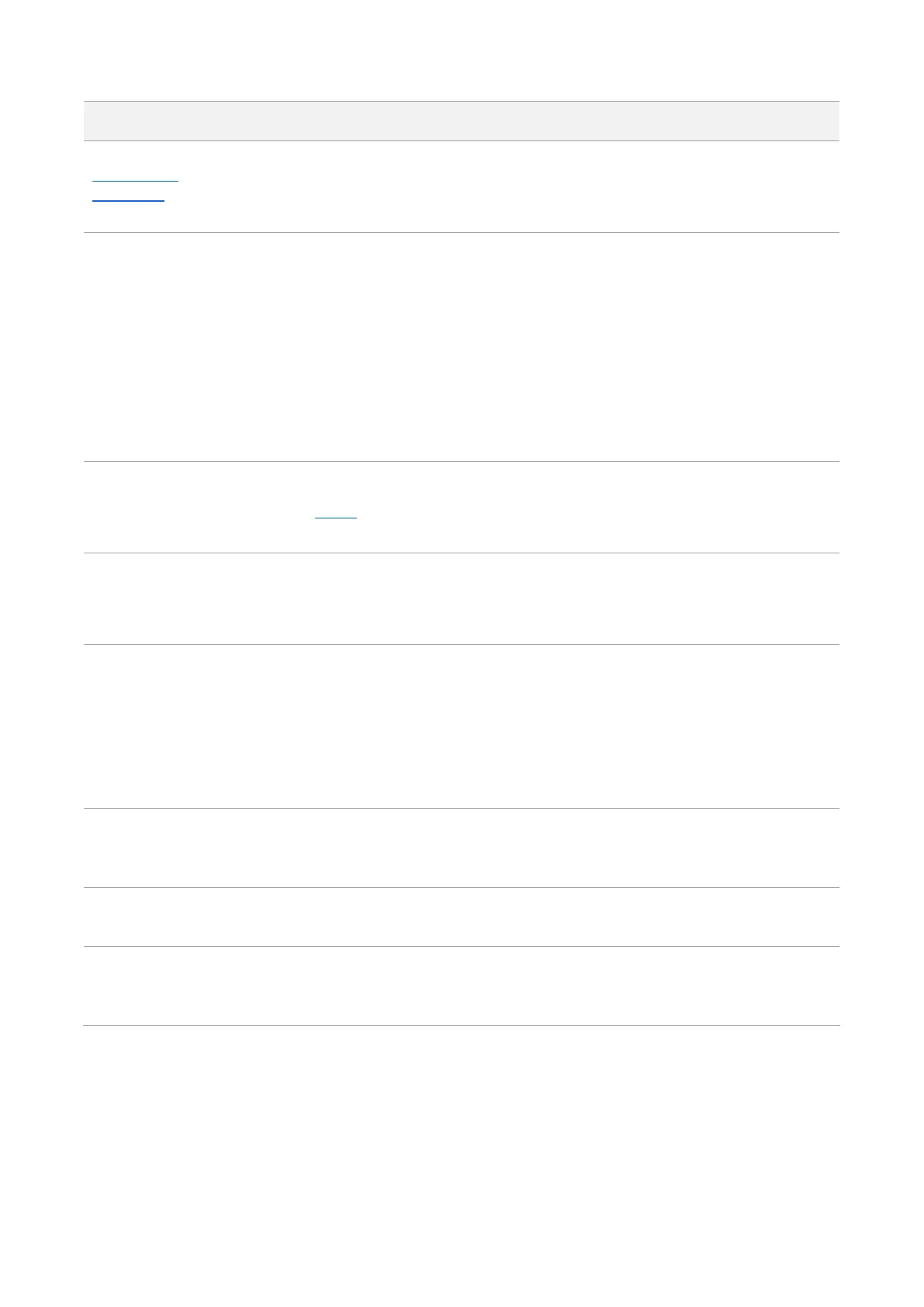Document version: V1.0
53
Used to enable or disable the air interface scheduling function of the AP.
If this function is enabled, the same download time is assigned to users experiencing
different download rates, ensuring a better experience for high-rate users.
It specifies the anti-interference modes you can select for your AP.
⚫
0 (Disable): Interference suppression measures are disabled.
⚫
1 (Suppress weak interference): Suppress mild interference for weak radio
environment.
⚫
2 (Suppress moderate interference): Suppress moderate interference for bad radio
environment.
⚫
3 (Suppress critical interference): Suppress critical interference for heavy loading
radio environment.
Automatic Power Save Delivery.
APSD is a WMM power saving protocol created by Wi-Fi Alliance. Enabling APSD helps
reduce power consumption. By default, this mode is disabled.
Multi-User Multiple-Input Multiple-Output.
If this function is enabled, AP can communicate with multiple users concurrently,
avoiding WiFi network congestion and improving communication.
Orthogonal Frequency Division Multiple Access.
If this function is enabled, multiple clients can transmit data at the same time, so that
the transmission efficiency is improved, delay is reduced, and user experience is
enhanced.
However, this function may cause compatibility issues; therefore, you are
recommended to disable this function to avoid compatibility issues.
Used to set the wireless client disconnection interval of this device. The device
disconnects from a wireless client if no traffic is transmitted or received by the wireless
client within the interval.
It specifies rates that wireless clients must support in order to connect to the wireless
networks of this device.
It specifies the additional rates that the AP supports, which are optional to wireless
clients. The clients meeting the basic requirement can connect to the AP with higher
rate.
Prioritize 5 GHz
Although the 2.4 GHz band is more widely used than the 5 GHz band in actual wireless networks
application, channels and signals on 2.4 GHz suffer more serious congestion and interference since
there are only 3 non-overlapped communication channels on this band. The 5 GHz band could
provide more non-overlapped communication channels. The quantity could reach more than 20 in
some countries.

